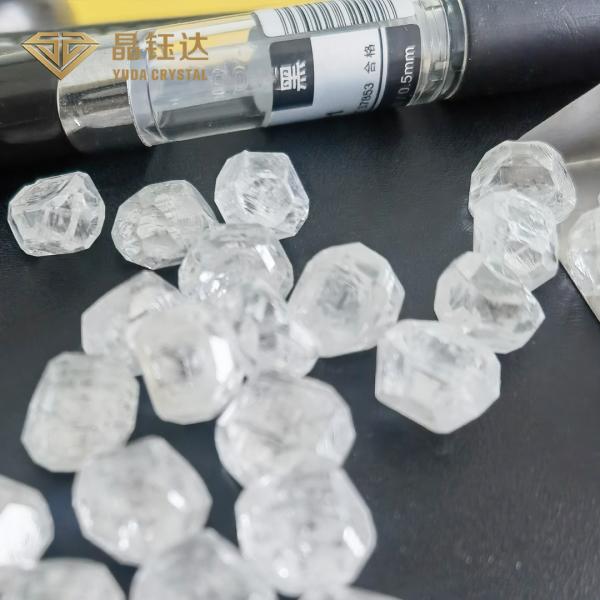HPHT Lab Grown Diamonds DEF Color VVS VS SI Clarity White 1ct-1.5ct
Lab Created Diamonds Description
While natural diamonds take tens to hundreds of millions of years
to form deep in the Earth, lab grown diamonds made in a lab can
take as little as a few weeks. At present, there are two main ways
to make lab grown diamonds.
One is high pressure and high temperature. During diamond
cultivation, the pure toner is compressed into a growth capsule,
which is then placed in a culture chamber, day after day, at a
pressure of 5-6 gpa and extremely high temperatures (up to
1,300-1,600 °C). Eventually the carbon atoms join together to form
a diamond crystal. Many rough diamonds with large grains of more
than 10 carats can be produced in one go in less than two weeks.
The other is chemical vapor deposition. Breeding process of
chemical vapor deposition method is a diamond chip to be placed in
a vacuum box, and then in the chamber filled with a mixture of
hydrogen and methane gas, the gas provides a carbon atom, under the
pressure of certain heating, until the gasification of carbon atoms
on the thin layers and layers of sedimentary, like rain, forming
uniform diamond coating. It takes nearly a month to grow a cut
1-carat CVD diamond crystal.
Both natural diamonds and lab grown diamonds are pure carbon
crystals, which are identical in physical properties, chemical
properties, crystal structure and optical properties. However, due
to the different formation conditions, the nature of natural
diamonds and lab grown diamonds are also different. The formation
temperatures of natural diamond crystals are similar to those of
lab-grown diamonds. However, natural diamonds grow into octahedral
(eight equilateral triangular faces) crystals, while lab-grown
diamond crystals can contain both octahedral and cubic (six square
faces) crystals (HPHT) and plate-like crystals (CVD).
Parameters Of Lab Created Diamonds
| Product Name | Synthetic (Lab created) diamond |
| Material | Lab-grown |
| Color | D-H |
| Size | 0.003PCS/CT-7CTS/PC |
| Grade | VVS VS SI |
| Used | Jewelry (necklace,ring) |
| Application | For Cutting Lab Grown Loose Diamonds |
| Place Of Origin | Zhengzhou, China |
Characteristics Of Lab Created Diamonds
Lab-grown diamonds are chemically, optically and structurally
identical to mined diamonds. What does that mean?
| The Difference Between Lab Diamond And Natural Diamond |
| Attribute | Lab Created Diamonds | Natural diamond | Distinction |
| Chemical composition | C(carbon) | C(carbon) | No |
| Refractive index | 2.42 | 2.42 | No |
| Relative density | 3.52 | 3.52 | No |
| Dispersion | 0.044 | 0.044 | No |
| Hardness value | 90 GPA | 90 GPA | No |
| Thermal conductivity | 2*103 W/M/K | 2*103 W/M/K | No |
| Thermal property | 0.8*10-6 K | 0.8*10-6 K | No |
| Light transmittance | DEEP UV TO FAR TR | DEEP UV TO FAR TR | No |
Resistivity | 1016 OHM-CM | 1016 OHM-CM | No |
Compressibility | 8.3*10-13 M2/N | 8.3*10-13 M2/N | No |
From a scientific point of view, cultivated diamonds are exactly
the same as natural diamonds, the only difference being where they
are formed.
Lab Created Diamonds Details












